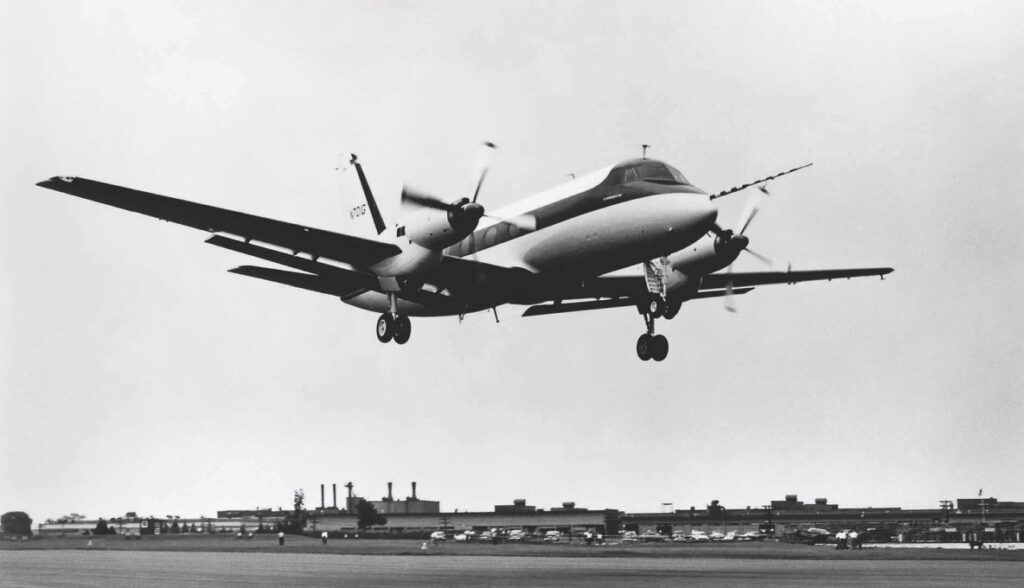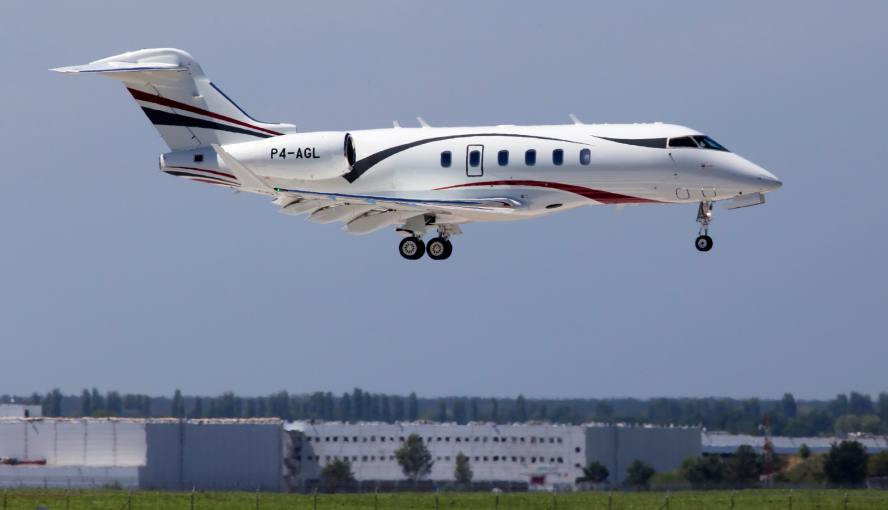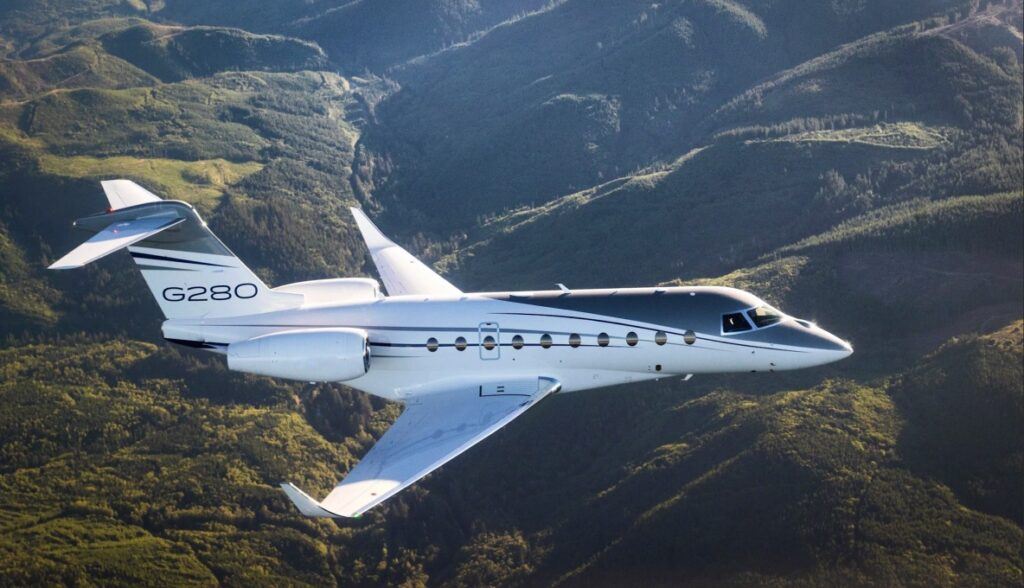The business jet world is a highly competitive space. There may only be a few global manufacturers, yet with stakes set at multi-million-dollar jets, the rivalry is fierce. This is especially true for the super mid-size jet class, where two models stand out: Gulfstream G280 and Bombardier Challenger 350.
For owners and elite flyers, the debate between Gulfstream and Bombardier is more than just a comparison of specs from the two aerospace giants — style, comforts, and technology stack also matter.
The following is a detailed comparison between the Gulfstream G280 and the Challenger 350, including performance, design elements, cabin features, and ownership considerations.
Gulfstream and Bombardier: Aerospace legends.
The aerospace sector is made up of behemoths, a handful of global leaders responsible for producing the entire world’s aircraft. As mentioned, when it comes to private jets, two of the largest players are Gulfstream, an all-American aircraft manufacturer, and Bombardier, a Canadian-based manufacturer.

History of Gulfstream Aerospace Corporation
Grumman Aircraft Engineering Co. (now Gulfstream Aerospace Corporation) was founded more than 60 years ago in 1958, when it unveiled the world’s first business plane, the Grumman Gulfstream I.
This twin-turboprop business aircraft could fit up to 12 passengers, hit speeds of up to 350 mph, and had a maximum range of 3,540 nm. It was such a success that in just a few short years, Grumman sold more than 200 aircraft, with several still in use today.
Running off the success of the first version, Grumman very quickly pivoted their R&D toward creating a jet-powered version. Soon, the Grumman Gulfstream II (GII) was flying, introducing the world to an entirely new class of aircraft: the business jet.
Following a series of acquisitions and a move to their current home base, Savannah, Georgia, Grumman evolved into Gulfstream American in the 1970s and, eventually, Gulfstream Aerospace Corporation in the 1980s. New models came into production, including the GIII, GIV, and the GV, the latter of which became the first ultra-long-range business jet in the world.
The 2000s saw a natural continuation of Gulfstream’s expansion in terms of new facilities, a growing national workforce, new aerospace research, and, of course, increasingly technologically advanced jet models. These new models pushed the limits of business jet design, from the G150’s certification by the FAA under Stage 4 noise standards to the G650’s 7,000 nm range and incredible Mach 0.85 max speed.
In 2008, Gulfstream announced the latest addition to its fleet, the G280. Launched into production a year later, the G280 is the fastest-flying, most fuel-efficient super mid-size jet in its class.
Volato is set to receive its first order of brand-new G280s in 2024.
| Current Gulfstream Fleet | |||
|---|---|---|---|
| Aircraft1 | Passenger Capacity | Max Range | Max Speed |
| Gulfstream G800 | Up to 19 | 8,000 nm | Mach 0.90 |
| Gulfstream G700 | Up to 19 | 7,500 nm | Mach 0.90 |
| Gulfstream G650ER & G650 | Up to 19 | 7,000 nm & 7,000 nm | Mach 0.90 |
| Gulfstream G600 | Up to 19 | 6,600 nm | Mach 0.90 |
| Gulfstream G500 | Up to 19 | 5,300 nm | Mach 0.90 |
| Gulfstream G400 | Up to 11 | 4,200 nm | Mach 0.88 |
| Gulfstream G280 | Up to 10 | 3,600 nm | Mach 0.84 |
History of Bombardier
Bombardier Inc., a Canadian company, didn’t start with any aircraft at all. Founder Joseph-Armand Bombardier launched the Bombardier legacy with the invention of the first commercially viable snowmobile in the 1930s. The company, originally named L’Auto-Neige Bombardier Limitée, evolved to produce the Ski-Doo (1959), trains and subway cars (1970s), and eventually, business jets (1986).
Their entry into the aerospace sector began when they purchased Canadair, a Canadian manufacturer that owned the Challenger, and an amphibious firefighting aircraft known as the CL-215.
In the 1980s, Bombardier expanded their aircraft line into the commercial sector with a series of regional jets designed to link smaller regions with more centralized major transportation hubs.
By the 1990s, the company was in acquisition mode, bringing Learjet and Boeing’s de Havilland division (responsible for the Dash 8) into the fold. Bombardier engineers reinvented both aircraft models, introducing newer aerospace technology and safety features.
Throughout the 2000s, Bombardier refined its business jet portfolio, including the Challenger and the Global Series. Since 2010, Bombardier has experienced a decade of stiff competition from Airbus and Boeing (competing against their commercial aircraft) and Gulfstream (competing against its business jets). This, in part, has led the company into several rounds of restructuring and layoffs.
| Current Bombardier Fleet | |||
|---|---|---|---|
| Aircraft Model | Passenger Capacity | Max Range | Max Speed |
| Global 80002 | Up to 19 | 8,000 nm | Mach 0.94 |
| Global 7500 | Up to 19 | 7,700 nm | Mach 0.925 |
| Global 6500 | Up to 17 | 6,600 nm | Mach 0.90 |
| Global 5500 | Up to 16 | 5,900 nm | Mach 0.90 |
| Challenger 35003 | Up to 10 | 3,400 nm | Mach 0.83 |
| Challenger 350 | Up to 9 | 3,200 nm | Mach 0.83 |
| Challenger 650 | Up to 12 | 4,000 nm | Mach 0.85 |

Business jet breakdown: Gulfstream G280 vs. Bombardier Challenger 350.
Both Gulfstream and Bombardier have large current fleets under production, yet considering Volato is in the business of business jets, it only makes sense that we compare its soon-to-arrive fleet of Gulfstream G280 business jets head-to-head against the Bombardier Challenger 350.
Flight performance.
In a side-by-side comparison of their performance features, the Gulfstream has a few notable differences from those of the Bombardier model. While both are designed for an intercontinental range, only the G280 has been certified for a steep approach. It can access short runways and high-altitude airports.
Gulfstream G2804
- Certified for steep approach
- Designed for short runways, high-altitude airports
- Improved for low-visibility conditions
- Intercontinental range
- Most fuel efficient
Bombardier Challenger 3505
- 99.9% dispatch reliability
- Ready to fly in under seven minutes
- Improved design for a smoother ride
- Intercontinental range
Performance specifications.
In a head-to-head comparison between the Gulfstream vs. Bombardier super mid-size models, the Gulfstream comes out on top with its specifications. It’s faster and has a measurable greater range. It also has the upper hand when it comes to takeoff runway requirements.
| Gulfstream G280 | Bombardier Challenger 3506 | |
|---|---|---|
| Maximum Speed | Mach 0.84 | Mach 0.83 |
| Maximum Range | 3,600 nm | 3,200 nm |
| Maximum Altitude | 45,000 ft | 45,000 ft |
| Runway Requirements | 4,750 ft (Takeoff) 2,720 ft (Landing) |
4,835 ft (Takeoff) 2,364 (Landing) |
Note: Published operator performance may differ.
Speed
The Gulfstream G280 beats out the Challenger 350 in terms of maximum possible speed. The former can reach up to Mach 0.84 and the latter Mach 0.83. However, passenger flights usually maintain a slightly calmer pace. Both have a typical cruise speed of Mach 0.80.
Range
An aircraft’s range can vary significantly depending on passenger count, baggage load, fuel weight, and even weather. However, under optimal conditions, the Gulfstream G280 and the Challenger 350 both have an intercontinental range. The Bombardier maxes out at 3,200 nm, and the Gulfstream can go just a little farther, up to 3,600 nm.
Altitude
Altitude matters, at least in terms of flying above inclement weather and commercial traffic conditions. Both jet models can hit top altitudes of 45,000 feet and a cruising altitude hovering at 43,000 feet.
Avionics and technology.
Whether you are flying a Gulfstream G280 or the Challenger 350, both cockpits come with an impressive tech stack. There are many parallels between the two jets, including the Synthetic Vision-Primary Flight Display, which creates a 3D image overlay to depict terrain and runways.
The primary difference between the two is the foundational flight deck technology. With the G280, you’ll find the PlaneView280™, and with the 350, it’s the Collins Aerospace Pro Line 21TM Advanced avionics suite.
Gulfstream G2807
- PlaneView280™ flight deck
- Head-up Display and Enhanced Flight Vision System
- Synthetic Vision-Primary Flight Display
- SiriusXM graphical weather
Bombardier Challenger 3508
- Collins Aerospace Pro Line 21TM Advanced avionics suite
- Head-up Display and Enhanced Flight Vision System
- Dual Flight Management System Synthetic Vision System
- MultiScan™ weather radar
Cabin design.
Undeniably, both Gulfstream and Bombardier’s super mid-size jet models make business travel more comfortable. Both come with full-sized galleys, an enclosed lavatory, and several seating arrangements, among other impressive interior cabin features.
Gulfstream G280
- Fully equipped galley
- Generous baggage compartment
- Large fully enclosed lavatory
- Full-sized closet
- Sleeping accommodations for up to five passengers
- Seating for up to 10 passengers
- Lowest cabin altitude in class
- Fully equipped galley
- In-flight luggage access
- All seats are berthable
- Sleeping accommodation possible with some configurations
- Seating for up to nine passengers
- Large fully enclosed lavatory
Cabin interior design features.
Considering that both super mid-size jets are capable of intercontinental flights, thanks to a range of at least 3,200 nm, these cabins are well equipped to ensure every flight is comfortable.
| Gulfstream G280 | Bombardier Challenger 3509 | |
|---|---|---|
| Cabin Size | 935 cu. ft. | 1082 cu. ft. |
| Comfort Features |
|
|
Cabin size
Let’s first peek into the interior of the G280. This cabin is just over 25 feet long and six feet wide, with an impressive high ceiling of 6’1″. In total, passengers have 935 cubic feet of space to stretch out in.

Now, on to the cabin of the Challenger 350. This jet has a similarly sized interior space, just over 25 feet long and seven feet wide. The cabin ceiling sits just below that of the G280, at six feet tall. In total, passengers have 1,082 cubic feet onboard the Bombardier.
Design features
Both manufacturers have improved interior cabin noise, but only the Gulfstream G280 boasts the best-in-class lowest in-flight cabin altitude at just 7,000 feet. The Gulfstream also features a sophisticated Air Ionization System to remove pathogens and allergens, maintaining a clean and healthy atmosphere with 100% fresh air on every flight.
On the other hand, the Bombardier Challenger has also made a few interior design adjustments to lower cabin noise, including a door between the galley and passenger seating.
Gulfstream vs. Bombardier: Cost of ownership.
There are a couple of avenues to follow on the road to ownership of a private jet: outright ownership and fractional ownership programs.
Operational costs
The upfront investment to purchase a new jet is part of the larger ownership picture. Owners must also consider operational costs, including insurance, crew, hangarage, maintenance and inspection, and other ongoing charges, most of which apply whether you fly or not.
Fractional ownership
Beyond outright jet ownership, a second option is fractional jet ownership. This ownership model gives high-net-worth travelers access to the lifestyle afforded by private jet ownership but at a fraction of the cost for purchase, operations, and management.
Ownership shares vary; from as small as 1/16th of an aircraft to a full share. Fractional programs work via a standardized monthly aircraft management fee for operational expenses.
Usually, these programs come with a capped number of flying hours according to share size. But at Volato, we’ve designed an entirely new fractional ownership model.
You can fly as little or as much as you like — regardless of share size.
Plus, as an owner, you get a revenue share to offset the annual operational costs. This applies every time your jet flies an eligible live mission.
Our fractional program sets a new industry standard, with the best-in-class customer experience and our IS-BAO Stage 3, ARGUS Platinum and Wyvern safety ratings.
Better for ownership: Gulfstream vs. Bombardier?
In the words of Nicholas Cooper, co-founder and chief commercial officer of Volato, “When considering expanding our fleet offerings, the cabin experience and operating efficiency were important considerations. Gulfstream and the G280 were the clear choice as being best in class.”

In essence, we’ve chosen to expand the Volato fleet into the super mid-size market with G280s for many good reasons. Gulfstream’s unique design promises greater flexibility thanks to its steep ascent certification while maintaining an ultra-comfortable cabin experience. In a showdown between Gulfstream and Bombardier, for our owners and our charter clients —Gulfstream easily won out.
With the first delivery of G280s set to arrive in 2024, we are now accepting pre-sales. Get in touch with our team to learn more.
Jet Share & Jet Card Inquiries Call 844-399-8998 & Charter Inquiries Call 844-399-9221